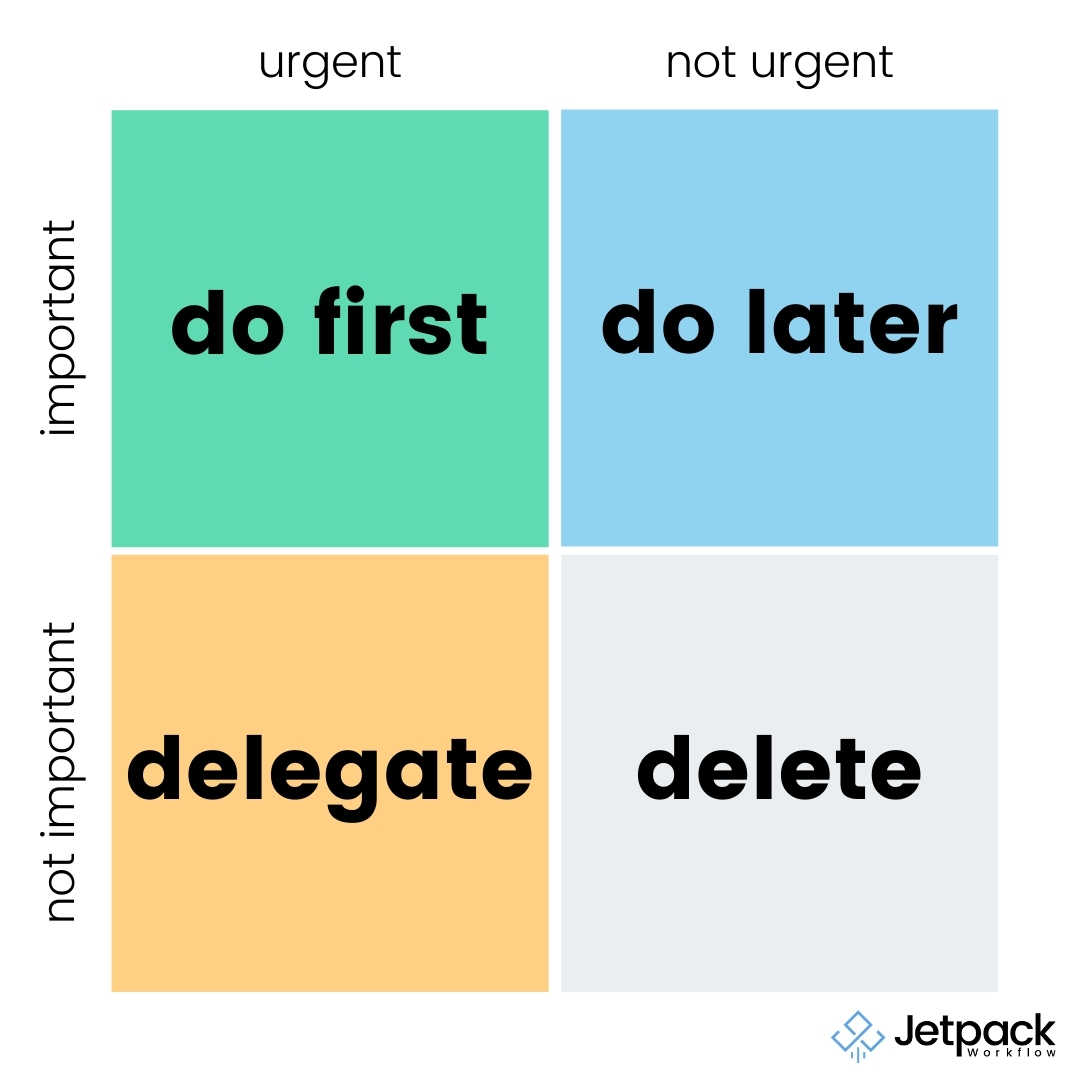How to Save 10 Hours per Week With Smart Workflow Systems

Having someone like Whit Groves to ensure that all tools and technology are functioning properly is priceless. Whit, a technology specialist at DWG CPA, makes sure that you’re getting an ROI on the technology you currently use. He also helps firm owners figure what’s going on in their businesses so they can formalize their processes.
In this episode of the Growing Your Firm podcast, Whit offers us insight into how he identifies problems in a firm’s workflow and how to correct it using process reviews.
Podcast
Summary
- Process Review
- Eisenhower Box
- Cleaning Out the Kitchen Sink
- Tackling the Backlog
Resources
- Introducing Zapier Integration to Jetpack Workflow
- Saving 16 Hours by Asking 3 Simple Questions
- 3 Time Management Tools that Will Raise Your Revenue
Routine Tasks
Exactly what does Whit Groves the Technology Specialist do? Every week, people ask him how to perform certain tasks. As the administrator for several tools, he syncs customers from Jetpack Workflow to QuickBooks Online. He also conducts process reviews for his company.
A process review is an analysis of how a task is done. It sounds simple; however, there are some challenges to conducting a process review. Many businesses have undocumented or informal processes. There may be certain conditions that must be met to perform a particular procedure. Sometimes new processes are discovered by making mistakes. A process review helps to concretize these processes, create formal procedures for tasks, and establish consistency in your firm’s operations.
Whit recalls how, last winter, he was trying to solve an onboarding-related issue that would create consistency between how different business tasks would be completed for new hires. He was straddling between three different solutions. Whit said:
“We had a CRM solution: we’re using Microsoft to manage our internal tasks. Then we had another third party service that we were trying to use to organize our work paper process for our business returns, but we didn’t really have a single source of truth as far as who’s doing what, and when certain tasks need to get done.”
Some of our readers may recall a similar incident that focused on how to conduct a process audit. Here is a typical order for a process audit:
- A process audit may begin by identifying the technologies a business is using.
- Next, manual processes involving hard copies and paper are identified. The paper trail is analyzed as it moves from place to place, person to person.
- After the paper trail is determined, a consultant may identify what type of technology or programs—if any—team members are using.
This kind of analysis alone can help firms to save up to 16 hours per week on administrative tasks!
While this kind of audit centers on the movement of paper processes and technology use first, Whit used a different technique called the Eisenhower Box to discover the problems which emerged within a process.
Eisenhower Box
The Eisenhower Box is a way of looking at the importance of certain tasks, and as a result, it addresses whether a certain issue is a priority. The Eisenhower box comprises four quadrants, using Urgency and Importance as the main factors:
- Urgent and Important
- Not Urgent but Important
- Urgent but Not Important
- Neither Urgent nor Important
Whit says that most of the time, people believe that certain issues are genuinely urgent and important. But we should aim to have tasks which are not urgent but important. This makes perfect sense: a non-urgent situation means that a firm is prepared with a plan. This leaves enough time to complete a task properly instead of scrambling. He also says that during tax season in particular, many firms find themselves with tasks and situations that are squarely in Quadrant 1.
Whit noted that in this particular situation, through the use of the Eisenhower Box, it became difficult to keep track of what was actually going on across all systems. Because some tasks weren’t being completed or revisited in a timely manner, issues with clients (like uploading a tax return) became a Quadrant 1 issue of urgency and importance.
Cleaning Out the Kitchen Sink Using an Accounting Practice Management Software
Besides being in a state of urgency with backlogged tasks, there were also issues with creating transparency for the firm owner. This raises profitability concerns, as it’s impossible to identify how long different tasks take to complete. The owner had to look across three systems just to see what’s being done.
One of the key turning points to this situation was the owner’s suggestion of using Jetpack Workflow. And one of the major assets of the system that caught Whit’s attention were the templates. The templates helped to create consistency in processes. Whit says:
“[The owner] can just check to see what the last task is, and he can see all the notes on it. It was huge visibility for him because of the flexibility of the templates. …he told me, ‘I’m really just using it to formalize the process. If we can use Jetpack for that, then I think we should.’ …Because of the timing of when we found Jetpack and then what we wanted to do from a process review side, we used that [in our] onboarding process to review everything that we were doing at the firm.”
Jetpack Workflow recently integrated Zapier to provide our users with immediately usable templates that aid in transparency and task delegation. For example, with one of the Zap templates, a new client can be created automatically within Jetpack Workflow when you add a new client in QuickBooks Online.
Tackling the Backlog
Jetpack Workflow offered a solution to the issue of transparency, and it also helped to cut down the backlog to 50-66%. Most times, there were tasks scheduled for clients who had already left, or tasks were so overdue that it was practically pointless to keep it on the list anymore.
Tackling backlogged tasks can create a recipe for disaster if it’s not addressed in a particular sequence. Many people fall into the trap of believing that they have to standardize their processes, catch up with their current workload, and clear out the backlog all at the same time. This kind of juggling can only result in inefficiency or failure.
Instead, it is best to make sure your own house is in order first. This may mean looking at your firm’s internal processes to see where your systems break down.
We covered a lot of valuable information in the podcast that is not covered in this write-up. If you would like to reach out to Whit Groves directly, he can be reached at wgroves@dwgcpatx.com.






